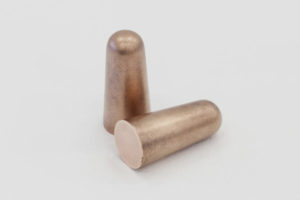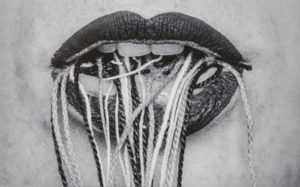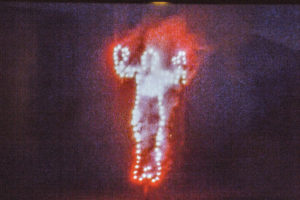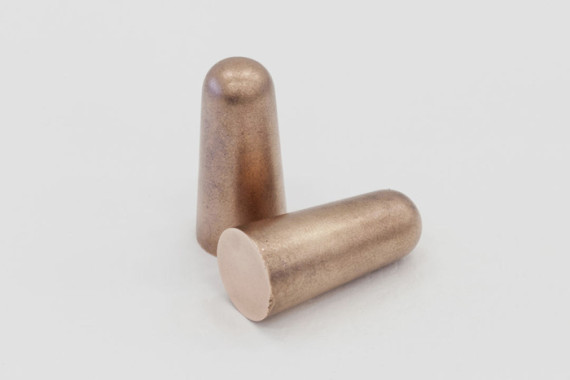After the forced interruption due to the unavailability of the buildings after the earthquake in 2012 the XVI edition of the Women’s Biennale returns to the Pavilion of Contemporary Art in Ferrara with an exhibition that explores the problematic Latin American situation through the works of four international artists. Ana Mendieta, Anna Maria Maiolino, Teresa Margolles and Amalia Pica, different from each other in age, background and expressive language, are united by an artistic vocation vivified by the same urgency to grasp and expose contradictions, violence, corruption and fragility of human relations in a context inflamed by crime, military dictatorships and strong social inequalities. The aim of the exhibition is to explore the complex problems and vitality of a world’s area in constant turmoil where the reasons of week people succumb to difficult living and freedom conditions and to demonstrate how art can be a powerful weapon of knowledge for breaking down geographical barriers and ideological boundaries.
The exhibition begins with a tribute to Ana Mendieta, a significant representative of the artistic movements of the ’70s who prematurely disappeared falling from 34th floor of the New York building where she lived with her husband Carl Andre, leader of the minimalist movement. Born in Havana and expatriated in the United States due to Peter Pan Operation that led many anti-communist Cuban families to separate themselves from their children to save them from Castro’s regime, she made the exile and the resulting emotional uprooting the hub of her intense poetic. In an attempt to restore the sense of belonging denied by a deceptive and repressive political situation, she chose Nature as her biological and spiritual motherland and turned her body into an artistic tool and space to implement a physical and symbolic reunion with the Earth in all its meanings as water, fire, ash, mud, sand or trees. In her well-known performances, documented by photographic shots on display in the exhibition, the artist impresses the outline of her body, called silueta, in primitive landscapes and then dissolves it in the fire, drawing on the magical and ritual potential of the ancient Cuban and Mexican folk beliefs in a painful search of her roots.
The specter of military dictatorship and its far-reaching interference into individual private life orientates also the work of the Italian Anna Maria Maiolino, who moved to Brazil in the bloodiest period of the counter-revolutionary regime. Her performances in the 70s and 80s, documented by video and photos, express the tension and insecurity of a generation forced to live with a perpetual condition of censorship, violence and danger. In the video entitled In-Out (Antropofagia) two mouths try to communicate with each other but are hampered by a series of objects that come out instead of words, while in the photographic triptych Entrevidas (Between Lives) the barefoot artist walks on a stretch of eggs on a paved road, trying not to crush them. The simplicity of these actions amplifies their expressive power by returning the visceral sense of helplessness of those who fear to pay with their lives every speech or movement suspected for a coercive authority that draws its strength from the suppression of the most basic human rights.
Again violence and denunciation of abuses perpetrated against the weakest people by a corrupted socio-political system is the soul of Teresa Margolles’ artistic works that arise from her experience as a coroner in contact with the mangled bodies of the victims of an out control organized crime. Emblematic in this regard is Aire (2003), installation consisting of an empty room in which two air conditioners vaporize water used to clean unidentified bodies coming from public mortuaries in Mexico City: the viewer’s instinctive revulsion who discovers from a little caption to have breathed “the air of death” forces him to feel part of a suffering too often perceived as alien because geographically distant. The aim of giving collective resonance to crimes that are likely to be lost in oblivion is also found in Sonidos de la Muerte, installation composed of acoustic devices that reproduce the ambient noise recorded in places of discovery of a female corpse, or site specific work Pesquisas, a schedule of leaflets exposing the disappearance of girls collected from the walls of Ciudad Juarez, a dangerous border area that attracts migrants in search of work in the numerous tax-free assembly plants linked to the US supply chain.
After the deafening absences orchestrated by Margolles, the analysis of silence understood as communicative short circuit is the focus of Amalia Pica’s work which analyzes the dynamics of the contemporary situation that the hypertrophy of telecommunication makes paradoxically chaotic. With a conceptual and ironic approach, the artist emphasizes the contradictions of language by enhancing its ambiguity as in the installation Switchboard, where visitors are invited to experience an absurd dialogue through two walls of sound jars randomly connected together or as in Palliative for Chronic Listeners, that consists of four pairs of ear plugs molten in bronze, copper, gold and silver in which the complete surrender to mutual listening becomes a precious jewel.
Silencio Vivo. Women Artists from South America.
curated by Lola G. Bonora and Silvia Cirelli
XVI Biennale Donna
17 April to 12 June 2016
Pavilion of Contemporary Art, Corso Porta Mare 5, Ferrara
Tuesday – Sunday 9:30 to 13:00 / 15:00 to 18:00
 Amalia Pica, Palliative for Chronic Listeners #1, 2012
, Tappi per le orecchie in bronzo, rame, oro e argento su piedistallo, ciascuno cm 155 x 25 x 25
edizione 1/4, Courtesy l’artista e KÖNIG GALERIE, Berlino
Amalia Pica, Palliative for Chronic Listeners #1, 2012
, Tappi per le orecchie in bronzo, rame, oro e argento su piedistallo, ciascuno cm 155 x 25 x 25
edizione 1/4, Courtesy l’artista e KÖNIG GALERIE, Berlino
 Ana Mendieta,Untitled (Volcano Series #2), 1979-1999
6, Fotografie a colori, ciascuna cm 50 x 33, edizione 9/10, Modena, collezione privata, courtesy Galleria Raffaella Cortese, Milano e Estate of Ana Mendieta, New York
Ana Mendieta,Untitled (Volcano Series #2), 1979-1999
6, Fotografie a colori, ciascuna cm 50 x 33, edizione 9/10, Modena, collezione privata, courtesy Galleria Raffaella Cortese, Milano e Estate of Ana Mendieta, New York
 Anna Maria Maiolino, Entrevidas (Between Lives), dalla serie Photopoemaction, 1981-2010, Fotografie in bianco e nero, ciascuna cm 88 x 56
, edizione 4/5 + 2 AP
, Monza, collezione privata, courtesy l’artista e Galleria Raffaella Cortese, Milano
Anna Maria Maiolino, Entrevidas (Between Lives), dalla serie Photopoemaction, 1981-2010, Fotografie in bianco e nero, ciascuna cm 88 x 56
, edizione 4/5 + 2 AP
, Monza, collezione privata, courtesy l’artista e Galleria Raffaella Cortese, Milano
 Anna Maria Maiolino, In-Out (Antropofagia), dalla serie Photopoemaction, 1973-200
0, Fotografie in bianco e nero, ciascuna cm 25 x 38
, Courtesy l’artista e Galleria Raffaella Cortese, Milano
Anna Maria Maiolino, In-Out (Antropofagia), dalla serie Photopoemaction, 1973-200
0, Fotografie in bianco e nero, ciascuna cm 25 x 38
, Courtesy l’artista e Galleria Raffaella Cortese, Milano
 Ana Mendieta, Anima, Silueta de Cohetes (Firework Piece), 1976,
Super 8 trasferito su high definition digital media, 2’22” colore, muto, Courtesy Galleria Raffaella Cortese, Milano e Estate of Ana Mendieta, New York
Ana Mendieta, Anima, Silueta de Cohetes (Firework Piece), 1976,
Super 8 trasferito su high definition digital media, 2’22” colore, muto, Courtesy Galleria Raffaella Cortese, Milano e Estate of Ana Mendieta, New York
 Teresa Margolles, Sonidos de la muerte (Sounds of Death), 2008, Installazione sonora, Courtesy l’artista e Galerie Peter Kilchmann, Zurigo
Teresa Margolles, Sonidos de la muerte (Sounds of Death), 2008, Installazione sonora, Courtesy l’artista e Galerie Peter Kilchmann, Zurigo
Graduated in art history at DAMS in Bologna, city where she continued to live and work, she specialized in Siena with Enrico Crispolti. Curious and attentive to the becoming of the contemporary, she believes in the power of art to make life more interesting and she loves to explore its latest trends through dialogue with artists, curators and gallery owners. She considers writing a form of reasoning and analysis that reconstructs the connection between the artist’s creative path and the surrounding context.







NO COMMENT